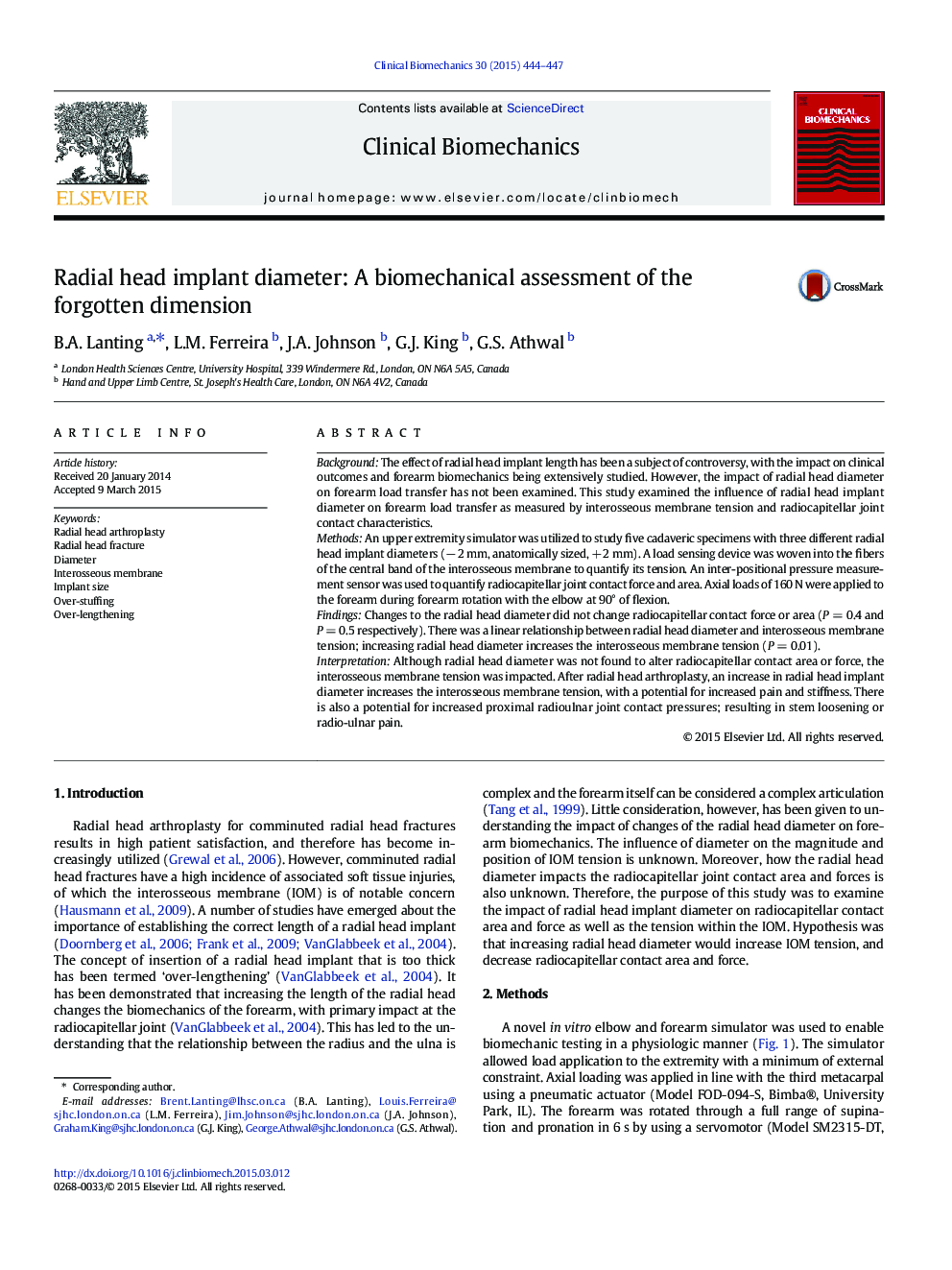| Article ID | Journal | Published Year | Pages | File Type |
|---|---|---|---|---|
| 6204790 | Clinical Biomechanics | 2015 | 4 Pages |
â¢Radial head arthroplasty diameter affects interosseous membrane tension.â¢Radial head diameter does not affect radiocapitellar contact area or force.â¢Potential for clinical importance at the proximal and distal radioulnar joints
BackgroundThe effect of radial head implant length has been a subject of controversy, with the impact on clinical outcomes and forearm biomechanics being extensively studied. However, the impact of radial head diameter on forearm load transfer has not been examined. This study examined the influence of radial head implant diameter on forearm load transfer as measured by interosseous membrane tension and radiocapitellar joint contact characteristics.MethodsAn upper extremity simulator was utilized to study five cadaveric specimens with three different radial head implant diameters (â 2 mm, anatomically sized, + 2 mm). A load sensing device was woven into the fibers of the central band of the interosseous membrane to quantify its tension. An inter-positional pressure measurement sensor was used to quantify radiocapitellar joint contact force and area. Axial loads of 160 N were applied to the forearm during forearm rotation with the elbow at 90° of flexion.FindingsChanges to the radial head diameter did not change radiocapitellar contact force or area (P = 0.4 and P = 0.5 respectively). There was a linear relationship between radial head diameter and interosseous membrane tension; increasing radial head diameter increases the interosseous membrane tension (P = 0.01).InterpretationAlthough radial head diameter was not found to alter radiocapitellar contact area or force, the interosseous membrane tension was impacted. After radial head arthroplasty, an increase in radial head implant diameter increases the interosseous membrane tension, with a potential for increased pain and stiffness. There is also a potential for increased proximal radioulnar joint contact pressures; resulting in stem loosening or radio-ulnar pain.
